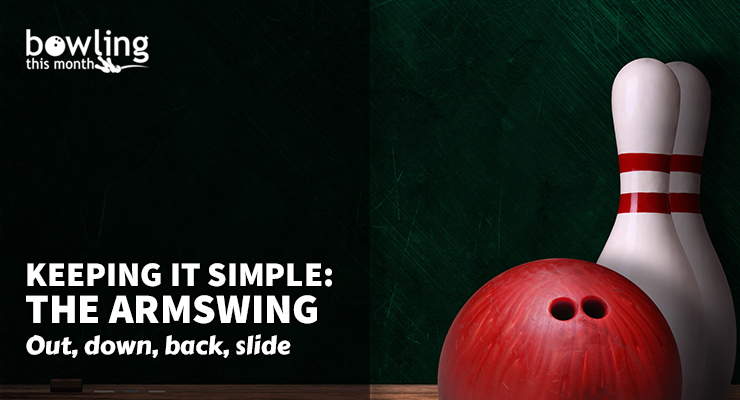Article Contents
- 1. Out, down, back, slide
- 2. Out
- 3. Down
- 4. Back
- 5. Slide
- 6. Recap
Note: This article is only available to Bowling This Month subscribers.
Over the years, bowling has evolved quite a bit. It can be easy to make simple movements overly complicated, so my goal with this article is to bring my “keep it simple” philosophy to the most fundamental movement a bowler can master: the armswing.
You might remember my article focused on the effective use of cues. My approach to coaching the armswing is no different. I divide the swing into four distinct sections, with a unique cue for each one. Throughout this article, I’ll discuss the four parts of the swing, along with the associated cue to help you in each section. With that in mind, let’s look at the four parts of the armswing.
Out, down, back, slide
The ball goes out, then down, then back, and, finally, you slide as the ball swings down into the release. It’s simple: out, down, back, slide. This was something my pro shop mentor, James Askins, would tell me when I was frustrated or struggling. He learned this from Bill Harris in the 1960s, so I’m simply passing this along. Despite all the changes to the game, it’s still relevant today, so maybe things haven’t changed that much after all! After fielding what must have felt like a thousand questions from me, he would just repeat again and again, “Out, down, back, slide.” He was saying many things, while only using four words. Let’s break it down.
“Out” does not mean push. This is simply the ball moving out in some way, shape, or form, whatever that means to you and your style. As long as this move is fluid and free, the shape isn’t particularly important.
“Down” is when the ball begins to fall from the out position. This is where gravity and momentum completely take over the swing; you are no longer “in control.” That’s assuming, of course, that you want your swing to be free and effortless.
“Back” is simply the ball going back behind you, or into the top of your swing. It truly is back because it goes behind you as you walk forward. To start this phase, the ball doesn’t really ...
Already a premium member? Click here to log in.


 (Only
(Only 